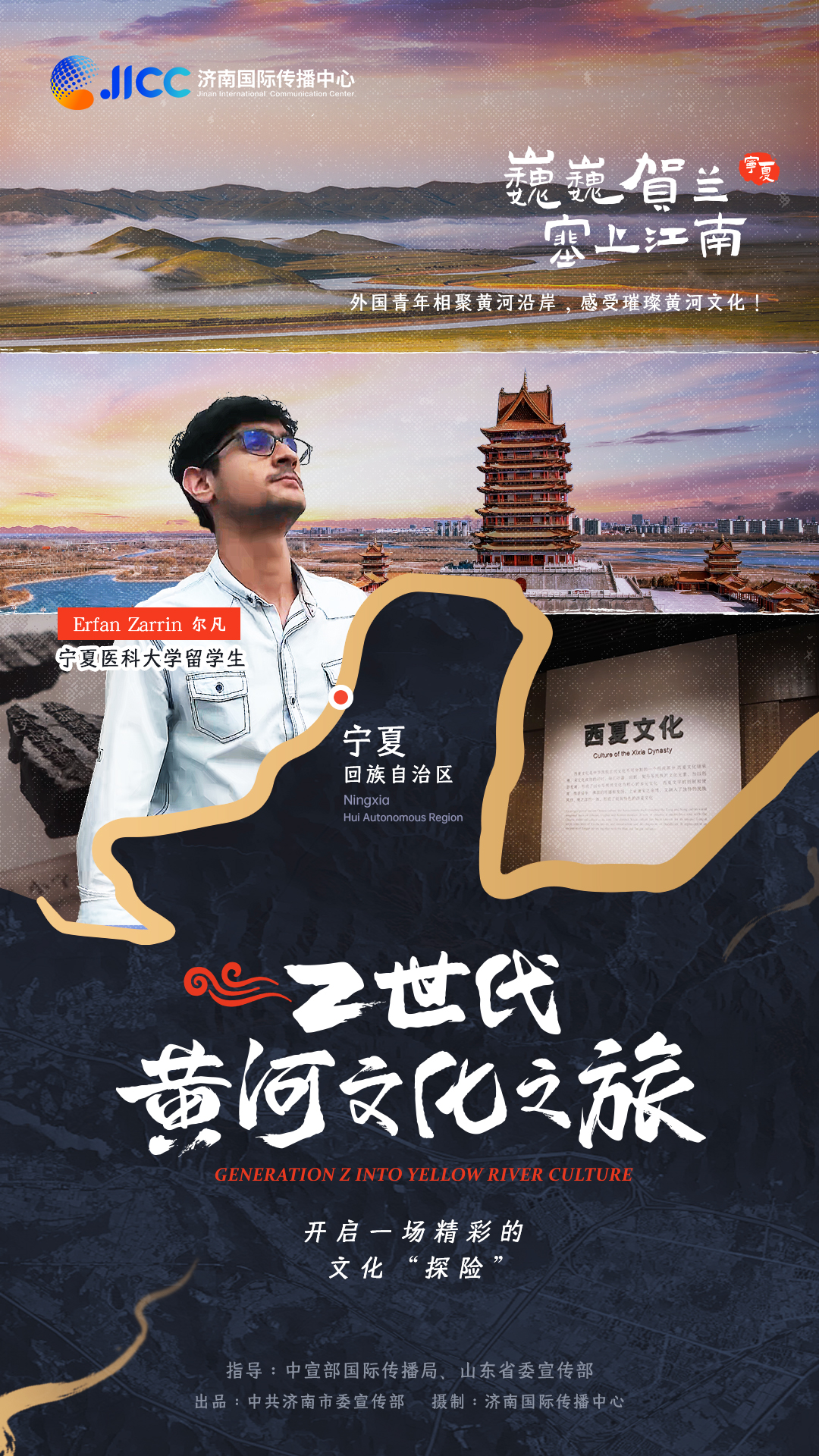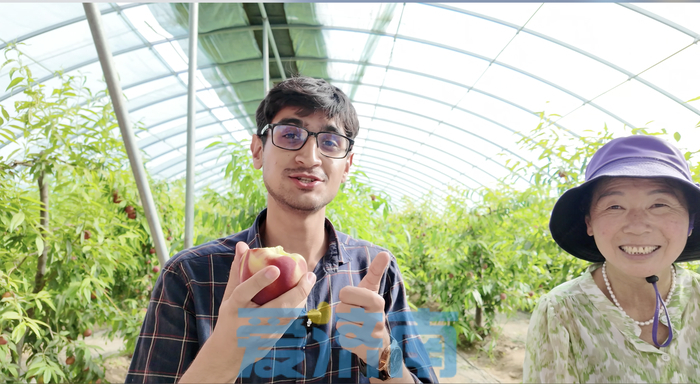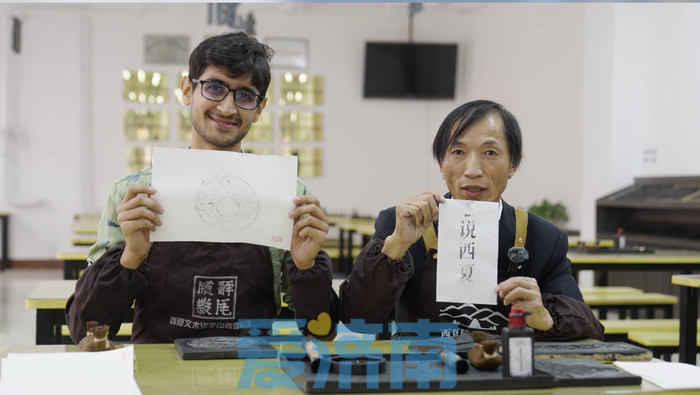2024-08-21
Across the vast land of China, the waters of the Yellow River surge endlessly, flowing thousands of miles through towering mountains, deep gorges, and converging with countless streams. These waters nourish the ancient land, giving birth to a splendid culture. The majestic landscapes and brilliant civilization carry the memories and dreams of the Chinese nation over millennia. Under the guidance of the International Communication Bureau of the Publicity Department of the Communist Party of China, the Publicity Department of CPC Shandong Province Committee, and the Publicity Department of CPC Jinan Municipal Committee, Jinan International Communication Center has specially planned and launched a series of short videos titled Gen Z’s Journey into Yellow River Culture. In these videos, international youth embark on a journey from the source of the Yellow River, traveling eastward along its course, exploring the high mountains, deep gorges, towns, and villages along both banks. Passing through the nine provinces along the Yellow River, they seek out the origins of Chinese civilization, experience the rhythm of a new era on this ancient land, and appreciate the splendid chapters of Chinese-style modernization. Through their unique perspectives, they lead domestic and international audiences into the dynamic, evolving China. Along this journey, they are not only recorders but also witnesses.

The Yellow River rushes across thousands of miles, drawing a giant Chinese character “几” (pronounced “ji”) on the land of China. Ningxia is nestled in the bend of the Yellow River’s “几” shape. Emerging from the Heishan Gorge, the Yellow River flows into the Ningxia basin, slowing down and meandering gently. This part of the Yellow River is its calmest, clearest, and most serene, nourishing the land on both sides and creating the fertile Ningxia Plain, known as the “Jiangnan of Northern China.”
Erfan Zarrin, a student from Iran studying at Ningxia Medical University, attributes Ningxia’s prosperity to the Yellow River, calling it the “main artery of life.” Starting from the Qingtongxia Yellow River Grand Canyon in Ningxia, Erfan travels north along the river, exploring the wonders it brings to the Ningxia Plain.
The Yellow River flows through Ningxia for 397 kilometers, supporting over 2,000 years of irrigation history. In Ningxia, the Qingtong Gorge dam has the most irrigation channels, with ten ancient canals originating here. The land in Ningxia slopes from south to north, allowing ancient people to use natural channels and height differences to divert water from the Yellow River to irrigate fields, creating a legendary irrigation system.
At the Qingtongxia Yellow River Grand Canyon, Erfan encounters the Tanglai Canal, over 2,200 years old. This canal was first dug during the Han Dynasty and renovated during the Tang Dynasty, witnessing the dramatic changes in Ningxia’s irrigation history. In Weiqiao Village, known as the “First Village of Ancient Canals from the Han and Tang Dynasties,” Erfan sees four major ancient canals - Tanglai, Daqing, Hanyan, and Huinong - passing through. Local farmers tell him how these canals have been vital for agriculture for over two millennia, irrigating fields and nurturing crops.

These ancient canals extend the culture of the Yellow River in Ningxia, while the Western Xia Imperial Tombs reflect the cultural integration nurtured by the river. The Western Xia Dynasty existed for 190 years, and the tombs stand as a testament to this glorious history. The architectural style of the tombs combines elements from the Tang and Song Dynasties, with majestic multi-eaved pagoda-like structures at their center, merging with the Helan Mountains and the Yellow River to form a harmonious scene.
According to Shi Peiyi, the curator of the Western Xia Museum, the Western Xia script, also known as the Tangut script, was influenced by Chinese culture. “The Tangut script appears familiar from afar, but unrecognizable up close. When the Western Xia people compiled the ‘Fan-Han heshi zhangzhong zhu’ Tangut-Chinese dictionary, they mentioned in the preface that Tangut script is also in square characters, with many strokes derived from Chinese characters,” said Shi.
Erfan is amazed by the grandeur of the Western Xia Imperial Tombs and deeply fascinated by the culture. The Yellow River and the Helan Mountains, like mother and father, guard every blade of grass and tree in Ningxia, creating more northern wonders.
On the eastern foothills of the Helan Mountains, wine grapes take root and flourish, covering 600,000 acres of vineyards on the Gobi Desert. The Yellow River provides ample water for irrigation, regulating the climate during the grape growing season. The river water nourishes every vine and grape like mother’s milk, enriching each bottle of wine with a complex and diverse flavor that impresses the world.
Two thousand years ago, wine was a crucial trade product on the ancient Silk Road, symbolizing the prosperity of Eurasian trade. Today, the Belt and Road Initiative continues this legacy, with wine serving as a cultural bridge.
From ancient irrigation systems to the Western Xia Imperial Tombs and the vineyards of the Helan Mountains, Erfan concludes that the Yellow River has profoundly influenced Ningxia’s agriculture and cultural development. “Through the ages, people have constantly been nourished by the Yellow River. Calling it the ‘Mother River’ is truly fitting.”

The winding Yellow River, like flowing gold, infuses every inch of Ningxia’s land with vitality. In this lush “Jiangnan of Northern China,” from the villages at the foot of the Helan Mountains to the homes along the riverbanks, life flourishes everywhere.
(Hua Shan, Kuang Qiongqiong)
12-24
12-24
12-23
12-18
12-18
12-18